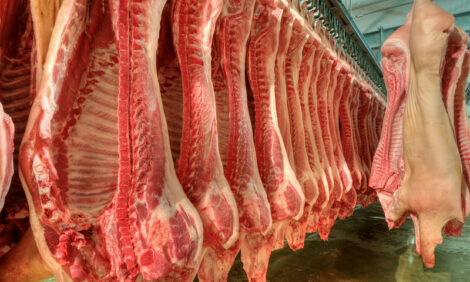



Campylobacter, E. coli Cases Rise; Salmonella Falls
EU - Campylobacteriosis is the most reported zoonotic disease in humans, with a continuous increase in reported cases over the last five years, according to the annual report on zoonoses and food-borne outbreaks in the European Union.The trend in reported human cases of verocytotoxin-producing Escherichia coli (VTEC/STEC) has also been increasing since 2008 and was further strengthened due to the outbreak in the summer of 2011.
However, Salmonella cases in humans have continued to fall, marking a decrease for the seventh consecutive year.
The report, which has just been published for 2011, produced jointly by the European Food Safety Authority and the European Centre for Disease Prevention and Control (ECDC) supports the European Commission and EU Member States in monitoring risks related to zoonotic diseases.
These diseases can be transmitted directly or indirectly between animals and humans, for instance by consuming contaminated foodstuffs or through contact with infected animals, the report says.
“The good news is that the positive trend in reduction of Salmonella cases in humans and poultry is continuing.
"However, the increase in Campylobacter and VTEC cases highlights the continued need to monitor and control the presence of these bacteria in the food chain in order to reduce the risk of human exposure,” said Pia Makela, Head of EFSA’s Biological Monitoring Unit.
Johan Giesecke, Chief Scientist at ECDC, added: "We need to remain vigilant and continue to strengthen our collaboration with all important partners involved in the prevention and control of zoonotic diseases.
"Although the results of the report show a sustained decrease in Salmonella cases in humans, Campylobacter and VTEC cases are still increasing. We can’t lower our guard."
In 2011, a total of 220,209 Campylobacter cases were reported in humans, 2.2 per cent more than in 2010. This bacterium can cause diarrhoea and fever, and the most common foodstuff in which Campylobacter was found was chicken meat.
VTEC/STEC bacteria accounted for 9,485 human disease cases in 2011.
The strong increase observed in 2011 was primarily due to the large outbreak of the rare strain O104:H4 in Germany and France associated with sprouted seeds. However, an increasing trend had already been reported in previous years.
Infection with VTEC strains can lead to bloody diarrhoea and Haemolytic Uremic Syndrome, a serious complication that can be fatal. With respect to the presence of this bacterium in animals and foodstuffs, VTEC was most often reported in bovine meat products and cattle.
Although salmonellosis has declined significantly in the last years, in 2011 it was still the second most frequently reported zoonotic disease in humans, accounting for 95,548 reported cases.
The continued decrease in human cases reflects the results of the Salmonella control programmes put in place by EU Member States and the European Commission which have led to a decline in Salmonella infections in poultry populations, particularly laying hens (and hence eggs) and chickens.
Salmonella, which can cause fever, diarrhoea and abdominal cramps, was most often found in fresh chicken meat, as well as minced chicken meat and chicken meat preparations.
The report also shows a total of 5,648 food-borne outbreaks recorded across the EU in 2011. Food-borne outbreaks include two or more human cases in which the same contaminated food has been consumed. These affected 69,553 people and caused 93 deaths. Salmonella continued to be the most frequently reported cause of the outbreaks with known origin (26.6 per cent of all outbreaks), followed by bacterial toxins (12.9 per cent) and Campylobacter (10.6 per cent).
Even though Campylobacter is the most often reported cause of zoonotic diseases overall, it is less often reported as a cause of food-borne outbreaks. The most common food sources of the outbreaks were eggs and egg products, mixed food, fish and fish products.
The report covers 10 zoonotic diseases in total, including also listeriosis, echinococcosis, yersiniosis, brucellosis, tuberculosis due to Mycobacterium bovis, trichinellosis, and rabies. It supports the European Commission and EU Member States in monitoring and reducing risks related to zoonotic diseases.
Other relevant findings show that the disease alveolar echinococcosis, which is caused by the Echinococcus multilocularis parasite, has increased in humans over the last five years. In several central European countries, this parasite was commonly reported in foxes which are the main source of human infection. Echinococcosis is a serious disease which develops gradually over several years and, if untreated, may be fatal.
Further ReadingYou can view the full report by clicking here. |







